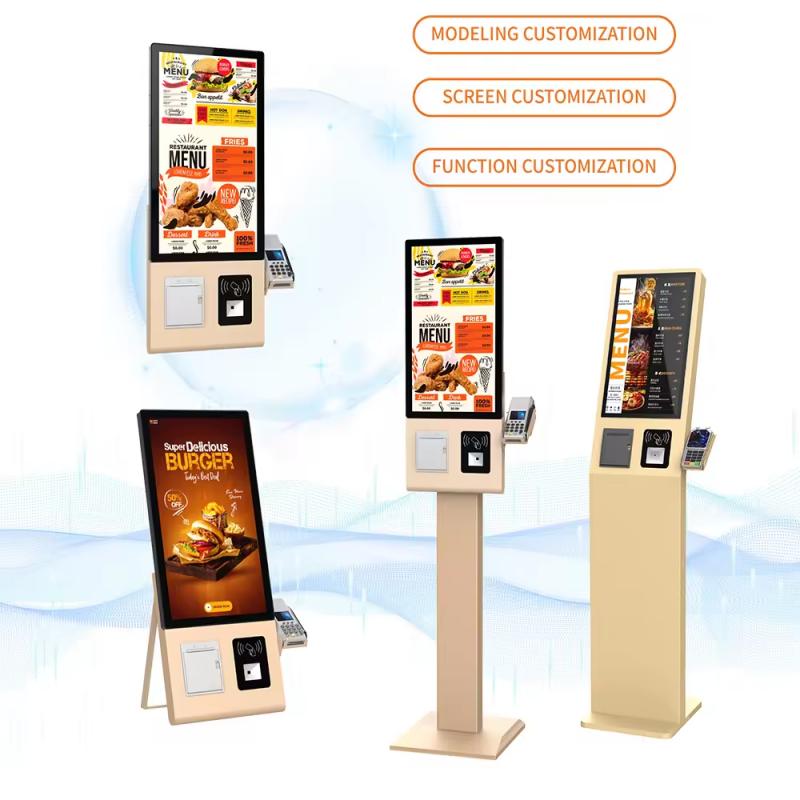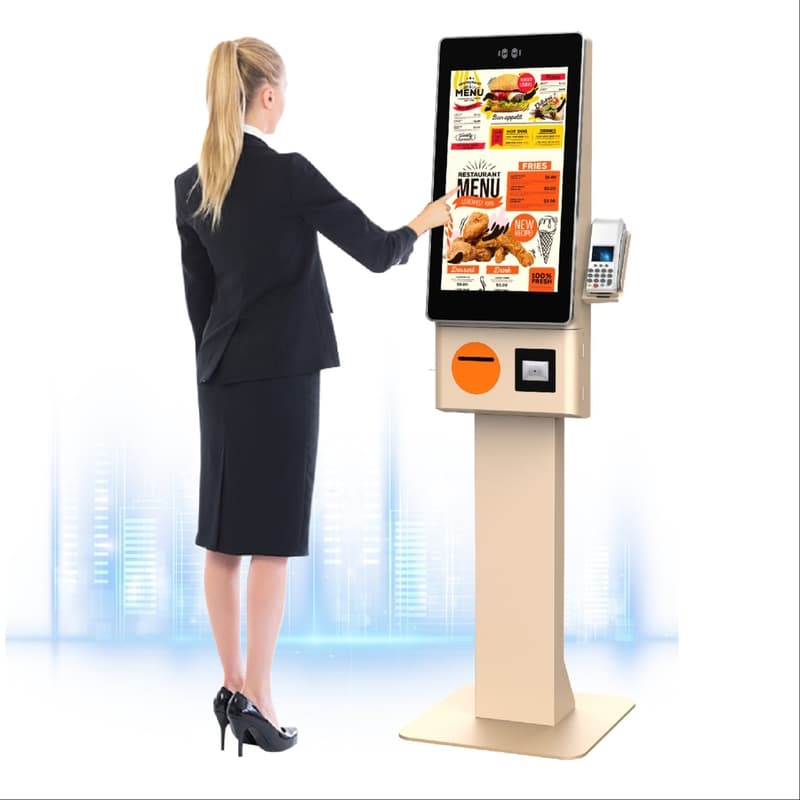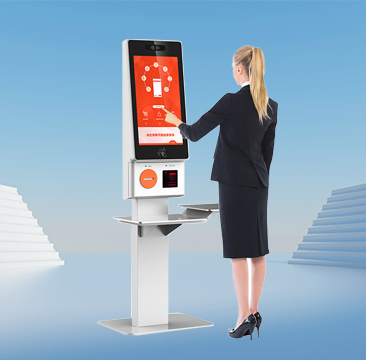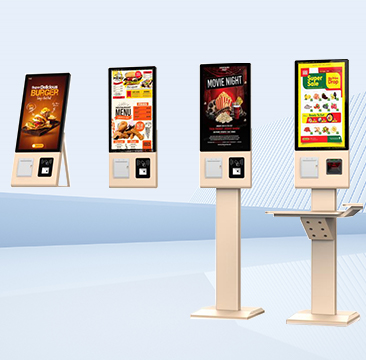
| Component | Description | Component | Description |
|---|---|---|---|
| Touchscreen Display | High-resolution, multi-touch screen for customer interaction. | Processor/CPU | Central unit for processing orders, running software, and managing operations. |
| Payment Terminal | Integrated system for credit/debit cards, NFC, and mobile payments. | Receipt Printer | Thermal printer for printing receipts, order summaries, or tickets. |
| Kiosk Software | Custom software for menu browsing, order customization, and payment processing. | Barcode/QR Scanner | Scans loyalty cards, promotional codes, or quick order access. |
| Chassis/Enclosure | Durable, tamper-resistant housing for all internal components. | Connectivity Modules | Wi-Fi, Ethernet, or Bluetooth for network access and data transmission. |
| Audio System | Speakers for audio feedback and accessibility options. | Thermal Printer | High-speed printer for order confirmations or customer receipts. |
| Power Supply/UPS | Provides power and includes an uninterruptible power supply for backup. | Security Features | Includes encryption, tamper detection, and physical locks for security. |
| User Interface | Intuitive, easy-to-use interface for customers to navigate and place orders. | Camera (Optional) | For customer engagement, security, or facial recognition (if applicable). |
Quick-Service Restaurants (QSRs): Customers can browse menus, customize their meals, and place orders without waiting in line, improving service speed.
Retail Stores: Shoppers can use kiosks to check product availability, place orders, and make payments, streamlining the shopping experience.
Cafes and Coffee Shops: Enables customers to quickly order and pay for their beverages, reducing congestion during peak times.
Cinemas and Theaters: Patrons can purchase tickets, select seats, and order concessions, enhancing convenience and reducing wait times.
Airports and Transportation Hubs: Travelers can order food, purchase tickets, and access information, making their experience more efficient and enjoyable.
Hotel Lobbies: Guests can use kiosks to check in, select room preferences, and order services, offering a more personalized stay.
Hospitals and Healthcare Facilities: Patients and visitors can order meals, schedule appointments, or check in for services, improving operational efficiency and reducing administrative burdens.

Reduced Wait Times: Speeds up the ordering process, allowing customers to place orders quickly without waiting in line.
Improved Order Accuracy: Eliminates miscommunication by letting customers directly input their orders, reducing errors.
Enhanced Customer Experience: Offers a convenient and interactive way for customers to place orders at their own pace.
Labor Cost Savings: Reduces the need for staff at the ordering point, allowing businesses to reallocate labor to other areas.
Increased Sales: Incorporates upselling and cross-selling features, encouraging customers to add more items to their orders.
24/7 Availability: Operates continuously, allowing businesses to serve customers even during off-peak hours or when staff is limited.
Data Collection: Captures valuable customer data, such as preferences and order patterns, helping businesses optimize their offerings.
Scalability: Easily expandable to meet the needs of growing businesses, with the ability to add more kiosks or update software features.

The cost of a kiosk self-order system typically ranges from $3,000 to $10,000 per unit, depending on factors like hardware quality, customization options, and software features. Additional costs might include installation, maintenance, and software updates. Despite the initial investment, the return on investment (ROI) can be significant. Businesses often see a quick payback period, often within 12 to 24 months, due to labor savings, increased sales from upselling and cross-selling, and improved operational efficiency. Kiosks also reduce order errors, leading to higher customer satisfaction and repeat business, which further enhances profitability. The data generated by kiosks can also be leveraged for targeted marketing and inventory optimization, adding to the long-term value.
Assess Business Needs: Determine the number of kiosks required, the types of transactions they will handle, and the specific features your business needs.
Budgeting: Consider the total cost of ownership, including hardware, software, installation, and ongoing maintenance. Compare this with the potential ROI to ensure it’s a viable investment.
Customization Options: Choose a kiosk that offers the level of customization your business needs, such as branding, menu configuration, and payment methods.
Vendor Reputation: Research vendors with a proven track record in the industry. Check reviews and ask for references to ensure you’re partnering with a reliable provider.
Integration with Existing Systems: Ensure that the kiosk can integrate seamlessly with your current POS, inventory management, and customer loyalty programs.
Ease of Use: Select a kiosk with an intuitive user interface to ensure a positive customer experience and minimize the need for staff assistance.
Security Features: Look for kiosks with robust security measures, including encrypted transactions, tamper-proof designs, and secure payment processing.
Future-Proofing: Consider scalability and future upgrades. Choose a kiosk that can adapt to your business’s growth and evolving technology needs.
Support and Maintenance: Ensure that the vendor provides reliable customer support and has a strong maintenance program to minimize downtime and keep the kiosks running smoothly.








What did our happy clients say?
Our new kiosk self-order system has drastically improved customer experience. Orders are accurate, and the process is quick and easy. Highly recommend this product—it's been a fantastic investment!
The kiosk self-order system has streamlined our operations and boosted sales. The installation was seamless, and the customer support was excellent. We’re very satisfied and strongly recommend it!
Customers love the convenience of the self-order kiosk, and it's made our service more efficient. The quality and functionality are top-notch. A great addition to our business—highly recommend!
Implementing the kiosk self-order system has been a game-changer. It’s intuitive, reliable, and has significantly reduced wait times. The manufacturer’s support was superb—couldn’t be happier!